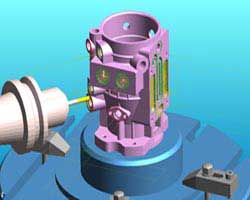
CAD System Development – A New Breed is on the Way
CAD system history was made when AutoCAD first hit the market back in 1982. It revolutionised the design and drawing industry. A complex drawing that would have taken a top draftsman many hours to piece together could suddenly be completed in a fraction of the time, and with far greater accuracy too. All design draftsmen in all industries now use CAD systems, including the designers at PRV Engineering, the phenomenally successful engineering high precision machining specialist based in Pontypool, South Wales.
Research teams at both the Open University and Leeds University, who are studying CAD system development, have been looking at the way designers read their drawings, with particular emphasis in the reader’s eye movements. It seems that by tracking these eye movements via a built-in camera, future CAD systems could then be designed to suggest shapes for the designer to incorporate within the drawing.
The professor of Design Systems at Leeds Uni, (Ms Alison McKay), is reported as saying that the end goal would be to enable future CAD systems to work in the capacity of a design assistant. The system wouldn’t actually be designing under its own steam. What it would be doing is to hypothesise that if the designer is working with particular shapes in mind, he/she might then like to consider some alternative shape permutations.
In order for the CAD system to be able to do this, it must be able to recognise which particular section of the drawing the designer is studying. In an attempt to fathom this out, research has been focussed on trying to understand how designers actually recognise various shapes. The research used cameras to pinpoint exactly where it is that the designer’s attention is focussed. As well as identifying the fixation point, the camera also records with what frequency the designer’s gaze returns to that exact same point. Having established this, it can then be defined which particular shapes the designer is interested in.
The researchers predict that future intelligent CAD systems would be capable of collecting this data. Once collected, the data would then have a set of rules applied to it that relates to whatever it is that the designer is drawing. These rules would vary from design category to design category; in essence forming a simple “language” structure that could then interpret the data and suggest new shapes. This would be particularly useful where the design is of a more artistic nature; designs that take as their premise, a specific shape which is then developed. For example Brand Logos, and architectural features; both marketplaces that PRV Engineering operate within.
Alison McKay believes that a CAD system for working with 2D objects with in-built eye tracking software could be on the market in approximately 4 to 5 years time. One thing is certain. When it finally arrives, it will take CAD system design to the next level, and PRV Engineering, who pride themselves in staying at the cutting edge of what is happening in the engineering industry will be one of the first to invest in the new breed of software.
This site uses Akismet to reduce spam. Learn how your comment data is processed.


 Mail:
Mail: 




Leave a Comments